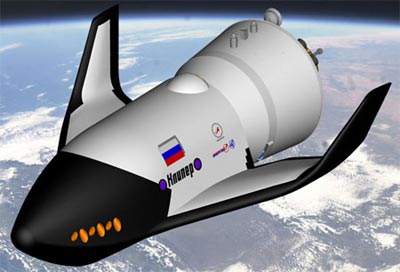About Clipper, the Russian spacecraft that never flew

In February 2004 it was announced by the Russian space agency that a new manned spacecraft is planned to replace the Soyuz spacecraft. It is actually a small ferry that can carry up to 6 people. The weight of the spaceship will be 14-12 tons and it will be possible to use it multiple times. The name given to the spacecraft is Kliper. The spacecraft is operated by 2 pilots and can transport 4 people and deliver cargo to the International Space Station. It will be possible to use the spacecraft to transport tourists as well. This also means commercial use of the spacecraft and therefore it could be a source of income for the Russian Space Agency.
A spherical cell is attached to the back side of the spaceship. This is the spherical cell that is in the front of the Soyuz spacecraft. The Russians have not completely given up on using parts of the Soyuz spacecraft. In the case of the shuttle, this cabin will serve as crew quarters. At the back of the cell is an attachment mechanism that allows connection to the space station. Before returning to Israel, the spherical cell detached from the shuttle. On the side of the cabin are the navigation engines used by the spacecraft for its various maneuvers and at its end are the sun visors. In the Soyuz spacecraft, the collectors of the solar panels are connected by means of a pivot that allows them to be rotated to absorb the sunlight. In the shuttle, the sun visors are connected to the orbital chamber in their full width, which requires the performance of various maneuvers for optimal absorption of sunlight.
There was an intention to develop a special launcher for this spacecraft which was named Onega, but due to funding difficulties this plan was abandoned. The alternative launcher found is the Zenith which has a similar capability in terms of the weight capacity intended for launch. The landing is carried out using two mechanisms. One mechanism is 3 parachutes and the other mechanism is navigation engines operated at a short distance from the ground. There was also an intention to equip the spaceship with landing wheels and landing pads that allow landing in water. In November 2004, they started thinking about attaching wings, which would allow maneuvers before landing.
An unmanned test flight was supposed to take place in 2011 and a first manned flight in 2012. In conclusion, the development of the spacecraft was stopped due to financial constraints. What contributed greatly to the program's cancellation was the mismanagement that accompanied it.
Sources
1. Russia developing space vessel for 6 astronauts, 19.2.2004
2. http://www.russianspaceweb.com/kliper.html
3. Russia Schedules Clipper Spacecraft Launch, 18.11.2015
See more on the subject on the science website:

4 תגובות
"If Herzl could collect..." - but he can't 🙂 and neither can you.. Fake news.
If Herzl could back up with facts he would already be treated in the best Russian tradition 🙂
And just Lehavim: If Herzl had not written all the money but "part of the money" - would you have reacted differently?
Herzl
You can't back up the nonsense you wrote with facts, so why are you writing nonsense?
All the money of the Russian government goes to the oligarchs led by Putin…..